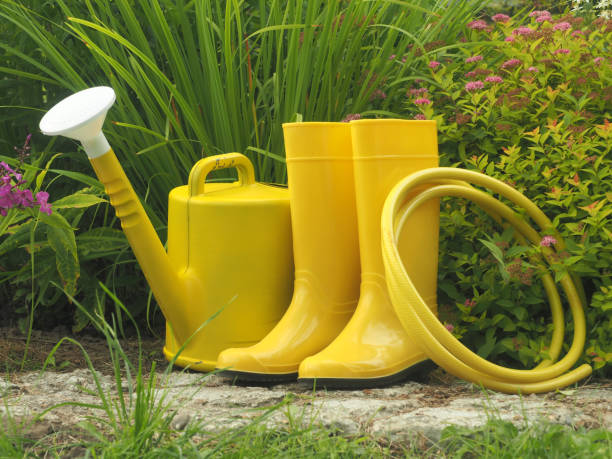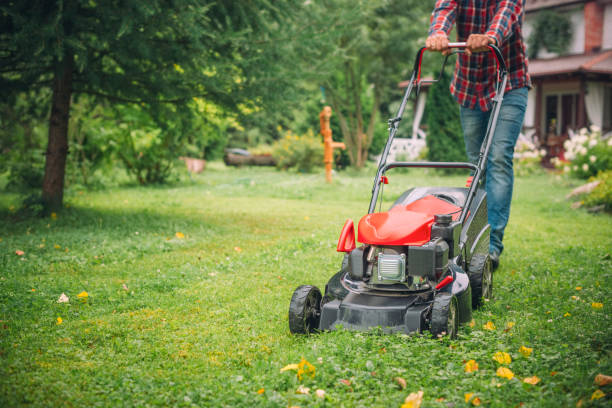So that gardening remains accident-free and enjoyable, you need good shoes and practical clothing. This guide explains what is important when making a purchase.
Shoes and clothes have to endure a lot when gardening. Dirt, weather, and movement demand a lot from the materials. To ensure that working outdoors is fun and safe, you should not skimp on the purchase of your personal work equipment. But what do you have to pay attention to in detail in order to benefit from practical, durable, and comfortable accessories? The answers are below.
What is important in garden shoes?
There are various shoes for gardening, such as garden clogs, low shoes, rubber boots, or ankle-high safety shoes. Each footwear has individual advantages and disadvantages and is therefore suitable for other activities:

- Garden clogs: They are ideal for simple errands such as weeding or planting flowers. When buying, the value should be placed on non-slip soles, weather resistance, robustness, and heel straps. In midsummer, models with openings to ventilate the feet can be beneficial. However, small stones and dirt also get inside the clogs very quickly. Closed alternatives are usually the better companions.
- Rubber boots: Perfect for rainy days or damp surfaces. The feet stay dry in them and with appropriate insoles and inner materials also warm. A non-slip rubber sole is indispensable because when it gets wet in the garden there is an increased risk of slipping!
- Work shoes: Closed-toe safety shoes are the better choice for garden work that involves a certain risk to your feet, for example when handling a spade or hedge trimmer. They protect the foot from bumps, cuts, and falling or sharp objects. However, the ergonomics must be right in order to benefit from a comfortable fit. Non-slip soles and toe caps made of robust materials are recommended. Models that go over the ankle are suitable for heavy work such as sawing wood or similar, while maximum support is required.
- Safety shoes: They must be worn whenever dangerous machines or equipment are used, such as an ax or chain saw.
Workwear tips
Garden workwear needs to be comfortable, practical, durable, easy to care for, and comfortable. Under no circumstances should trousers, T-shirts, sweaters, and jackets restrict movement. That would significantly reduce the fun of working and even increase the risk of accidents. Stretchy materials with elastane content would be an advantage. At the same time, breathable textiles that wick sweat away as quickly as possible are essential. Pure cotton is not one of them. The natural fiber absorbs moisture quickly but has problems releasing it quickly into the environment. Material mixtures of cotton and microfibers are therefore recommended. They combine the positive properties of several fibers in one product. And these materials are also easy to wash. So if your clothes get very dirty when you work in the garden, you can clean your work clothes well.
Garden pants
Whether dungarees or normal trousers is a matter of taste. Dungarees make wearing a belt unnecessary, which is quite annoying when you constantly bend over. Basically, work trousers with practical pockets are ideal. Ideally, smaller tools such as pruning shears or a knife can be safely stowed away in it. Reinforced seams and integrated knee pads are ideal for garden trousers. While the reinforced seams maximize the durability of the pants, the padding protects the knees, which are quickly affected and hurt when weeding or planting. Also, note how you can easily remove grass stains from your garden trousers.
Garden jacket
To be protected from bad weather, it is always good to have a windproof and waterproof jacket at hand. It makes working in the open air more pleasant in rain, fog, or wind. In winter, jackets with sufficient protection against the cold are a must. A suitable insulation layer prevents the body from cooling down. Garden lovers can also keep warm with moisture-repellent and insulating hats.

Garden gloves
Gloves are a crucial piece of workwear for home gardeners. They should have the following details:
- abrasion-resistant inner surfaces
- breathable textile fabric
- reinforced and non-slip fingers and insides
- perfect fit
- reinforced seams
- water-repellent surfaces
Incidentally, high-quality gardening gloves only limit your dexterity minimally. They guarantee the usual sensitivity and make precise handling possible. If you want to enjoy additional safety, you can use puncture-resistant and cut-resistant protective gloves.
